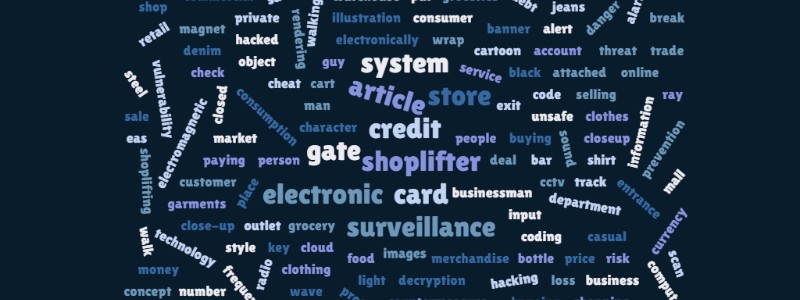Many of us have purchased products that have a label or tag attached to them. Often they require removal or deactivation before we’re able to walk out of the store with them. The EAS tags/labels require removal or deactivation before we’re able to walk out of the store with them. This is an EAS system at work in a retail environment. The security tags are a reminder for would-be thieves that items within the store are tagged and alarms – either visual or audible (sometimes both) will be triggered should they walk from the store without being purchased.
There are many different types of tags, labels and gates a retail outlet can utilise to reduce shoplifting and theft, but before we go into the specifics of different labels and types, let’s take a general look at what EAS is and how it works.
How EAS (Electronic Article Surveillance) Works
EAS systems use radio frequency technology with both RF and AM systems to detect articles or products that have EAS labels, stickers or tags attached to them when they pass through gates or sensors at the front of the store. This enables staff and store owners to know if an unauthorised product is leaving their store through entrance or exit (like the front entrance as opposed to the Points of Sale).
There are millions of EAS systems installed worldwide and EAS the standard method to control and reduce shoplifting and staff fraud within the retail sector. It’s worth noting that in Australia (2017-2018 financial year) theft cost retailers $3.37 billion dollars so reducing theft is an appropriate measure if you wish to improve the bottom line in the highly competitive retail market.
In Australia, there are two main types of EAS systems used in our retail sector. These are outlined below.
AM EAS Systems
AM systems use acousto-magnetic technology in the 58KHz range and will usually send out pulses of acousto-magnetic signals at around 50 times per second (similar to how bats or dolphins locate prey by sending out echolocation signals). The labels or tags of an AM system will pick up these pulses or signals and become activated when in the detection zone. If the tags meet certain criteria (e.g. they haven’t been deactivated) an alarm will sound. Usually, an AM based system will give you a wider detection area (up to 2.4 metres).
RF-EAS Systems
Radio Frequency (RF) Systems are the most popular systems and are used by the majority of retailers in Australia. These systems are used throughout Coles supermarkets, K-mart, Target, Officeworks, First Choice, Woolworths supermarkets, Big W, Dan Murphy’s as well Myer. The RF-EAS adhesive labels are very thin and easily integrated into packaging via source tagging. RF-EAS labels have a resonant tuned circuit incorporating a small antenna that responds to the 8.2 MHz frequency range. When an RF label or sticker meets the criteria set by the alarm system it will trigger the alarm system which then provides either audible or visual (most times both) alarms within the store.
What’s the difference between RF and AM EAS Systems?
When looking at the two types of EAS systems there are a few key differences and the types of labels you require will be determined by the type of security system you have set up in your store. For example, RF labels won’t work with an AM system and visa-versa. One of the major differences between the two systems is that an RF will enable store owners to integrate security deactivation and barcode scanning into one single process. If a store uses an RF- EAS system the complete sale transaction does not require any additional process and therefore very streamlined.
What is the best EAS system for my business?
This really depends on the types of products you stock (general retail products, appliances, clothing, alcohol, etc) and how many exits/entries you have and if your products are metal (there are some implications with labels being applied to metal) where your products are located or merchandised. The appropriate system is always the one that’s going to reduce theft and shrinkage the most without causing additional issues like false alarms or extra work for staff.
Talk with Easitag today on 1800 077 375 to find out how we can help you.




